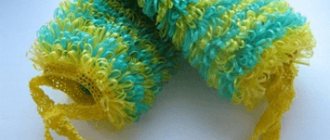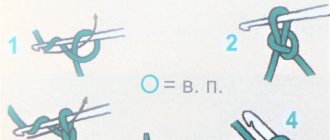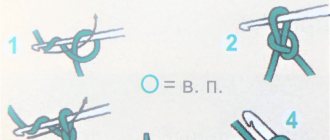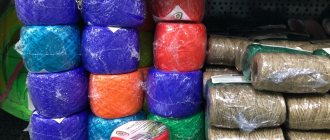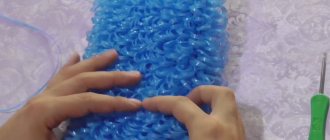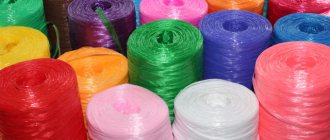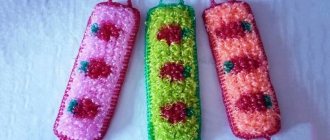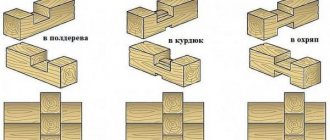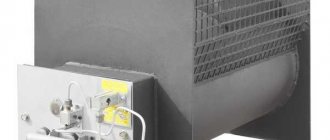There is no way to do without such a necessary thing as a simple washcloth in the household. We simply need it in everyday life. It is impossible to live without it in the bathroom and kitchen. There are many types of washcloths, such as smooth, fluffy, straight, cylinder-shaped, and round. There is a large selection of these products of all types in the trading network, but you can not spend money from your home budget and knit any one you like with knitting needles.
This type of knitting will not require large material costs, because you will only need synthetic threads and knitting needles (hosiery or with stoppers). In this article you will learn how to knit washcloths of several common types. This is a straight, elongated loop (P), a cylindrical and round pipe. Such products are knitted from fairly stiff synthetic yarn. To conclude the article, we will talk about smooth washcloths knitted using fabric strips.
Master class on knitting a straight washcloth from elongated loops
Let's prepare synthetic threads of bright colors, as well as ordinary straight knitting needles No. 3. For the first row (R), we cast on 30 P, and knit 5 P with stockinette stitch. Starting from the sixth P, we will begin to perform extended P. They can be done using two techniques, on the left or on the right hand:
We invite you to watch the following video master class, which gives a complete understanding of knitting elongated loops.
You can perform a front P, alternating 1x1 elongated and regular P. In the next 7th purl P, we knit exclusively with facial loops (LP). We knit the eighth R like the sixth. In the future, it is necessary to alternate rows six and seven, that is, we will do it according to the following scheme until the required length of the product is reached:
Read
Step-by-step instructions for knitting baby booties
When finishing knitting, you need to make the last 5 P in stockinette stitch, as at the beginning. We will need strings, and we will tie two thin strips. For each we cast on 40 P, and after knitting three P with stockinette stitch, we close the row. We connect the finished lines with a washcloth with threads.
Video: Learning to knit elongated loops
How to crochet hard and soft
Crocheting a washcloth can be difficult for beginners, but step-by-step instructions will help you get the job done. The main thing is the ability to knit a lush column.
For a double-sided washcloth, a No. 4 hook and any polypropylene yarn are suitable. The future washcloth can be either plain or beautiful multi-colored.
The sides turn out to be different - one is hard, knitted lengthwise, and the other soft, knitted across:
- 1st step – chain. The length of the future washcloth will depend on the number of loops cast on.
- The 1st and 2nd rows consist of sc.
- 3rd row. If the washcloth is multi-colored, then first an air loop is knitted with 2 threads, followed by 2 sc, then a fluffy stitch. It is untied from the originally knitted chain.
To form a fluffy column, you should knit 5 dc and secure them with an air loop. Next come 3 sc and knitting the next lush column. This continues until the row ends.
- 4 row. The first loop is knitted with an air loop, then the sc is knitted into the loops of the previous row. For a multi-colored washcloth, the last loop is knitted with 2 threads at once.
- The 5th row is knitted again with a thread of the first color, chain stitch as well. Next comes the alternation of 3 sc and a lush column, which is knitted from the loop of the last knitted row of the same color.
- Row 6 is knitted like row 4.
- 7th row. If the washcloth is knitted in different colors, a thread of the third color is introduced into the work and row 5 is repeated.
- Row 8 is similar to row 4.
- Continue knitting until the required width of the washcloth is reached.
To knit the soft side, you need to start working from the side of the resulting fabric. This side is knitted in the same way as the previous one, but the fluffy stitches are made from three dcs, not five. And they will alternate not with 3 sc, but with 2. Having finished the 2nd side, both halves are folded and either crocheted around the perimeter or sewn from the inside out. At the request of the knitter.
If the halves were sewn together, then the result is a pipe and the holes still need to be crocheted and then the handles are tied. You can sew cotton braid as handles. To make it soft, scald the washcloth with boiling water.
How to knit a washcloth with elongated loops in the round
The tubular washcloth has the shape of a cylinder and is knitted with elongated U made of synthetic threads. To knit it, you need to prepare fairly stiff synthetic yarn of bright colors, as well as stocking needles for knitting in the round:
We begin needlework with a set of 32 P, after which we distribute them onto 4 stocking needles and knit in the round. In this case, there are 8 stitches for each knitting needle. We knit in the same way as in the first master class, alternating stitches with elongated stitches and rows of knit stitches. We knit the first and last stitches with stockinette stitch, as in the first case. At the end we also make thin ropes, or replace them with a thin ribbon that matches the color of the yarn. If desired, you can put foam rubber inside and sew up the ends of the cylinder. The presence of foam rubber inside leads to the fact that it foams well.
Materials
The choice depends on what kind of washcloth you want to make, as well as who will use it. There are many yarn options. If you knit a washcloth with knitting needles made of polypropylene rope, the product will turn out to be rough and hard. Not everyone will like it, especially if it is intended for a girl with delicate skin.
Jute threads are positioned as an environmentally friendly material. But an allergic reaction often occurs to it, including during knitting. I don't consider this option.
On the Internet you can see how to knit from bags. But things take time. And not everyone will understand a gift made from plastic garbage bags, right? So I choose the path of least resistance. These are ready-made polypropylene threads specifically for knitting washcloths. They are much thinner than a rope. But at the same time very durable. I liked the beige threads as the main color, as well as the brown skein for the stripes.
I won’t knit a washcloth in two threads, because then the washcloth will be too dense. The idea was to make a freer product. That's why my knitting needles are 5 mm. They are long. Because on short stitches very often the loops slip off the working needle.
How I see my washcloth. This is a small square with a fur pattern with elongated loops. They will be on one side. On the other hand, I plan to make a handle in the middle so that I can put it on my hand.
Round washcloth with elongated loops
This adorable sponge is very convenient because it has a round shape. When knitting, a garter stitch pattern is used. Let's start working by casting on 20 P on regular knitting needles. We need to make a rectangular-shaped fabric. At the beginning of every second P we add 1 P, and at its conclusion we knit 2 P together once. As a result of this technique, the shape of the product is rounded. Next, dial 5 P for the handle, and knit a strip 15 centimeters (cm) long. We tighten the ends of this cord and sew them together. Then we connect both ends with threads.
Read
Types of melange yarn and its use in knitting
Photos of beautiful do-it-yourself washcloths for showers and baths
It seems that the washcloths are all the same, differing only in color. But real needlewomen create interesting products for their family and friends.
source
Smooth massage sponge made of knitted yarn
This smooth sponge is knitted from strips of fabric that can be made in a variety of ways. But first, let's choose a suitable fabric that won't fray at the edges when cut. When it comes to knitting, it is best to use synthetic pieces of old clothing or tights. It is necessary to choose the largest piece of fabric so that when cutting you get a long ribbon without knots.
There are many ways to cut any piece of knitwear. The first technique involves moving the scissors in a spiral. Cutting a piece from one corner, we move to the nearest corner. In the second corner we turn the scissors and cut at an angle of 90 degrees. So we move, cutting the piece from the edge to the middle. In this case, you need to cut off the corners and ensure that the strips are of equal thickness:
You can cut the fabric into serpentine strips. At the same time, we start cutting from any corner and move to the opposite corner. Not reaching the second edge by a couple of centimeters, turn the scissors 180 degrees and cut in the opposite direction. Using this technique, we cut the fabric to the very end, and you also need to round the corners. We wrap the finished elements into a ball and begin to perform them with a set of 11 P.
Let's make 8 P with a garter stitch pattern.
If you have stripes of different colors, then continue making 10 R with the second shade. Next, go back to the first fabric color.
We alternate the shades of fabric yarn to get this color. Then close the P of the last row and sew three strips to the ends.
We braid a braid from these strips, and make the same braid on the other side of the washcloth.
Video lesson:
Lush loofah
To make the washcloth look fluffy, you need to use a polypropylene thread folded in half. We begin the work with a set of thirty air loops and connect them with a ring. We knit a single crochet into each of the air loops. In the next row, single crochets alternate with single crochets. Then the same pattern is repeated.
Video lesson:
Washcloth without elongated loops
Work begins with a set of 30 air loops. The resulting chain is looped, and two rows are knitted with single crochets. The next row is knitted with single crochets. Next, the main pattern is knitted, consisting of three double crochets, with a gap of two double crochets between them.
The result is a beautiful pattern that also closes into a ring. This three-stitch pattern is repeated on all subsequent rows until the remaining length of the washcloth is knitted. The washcloth ends, as it began, with two single crochets. The washcloth is almost complete, all that remains is to tie the handles.
Let's sum it up
This tutorial will help you knit a washcloth. As you may have noticed while reading, this is a fairly simple craft that can bring a lot of pleasure from the process itself.
A homemade item, enclosed in a beautiful package, will be an excellent gift option for March 8th or New Year. To truly please any woman, add shampoo, scrub or body milk to the grater. You can also knit children's washcloths-toys, with which you can surprise your kids. Good luck!
Video lesson:
Washcloth with a pattern of “Bumps”
The yarn used is double, hook number 5. First of all, 36 chain stitches are cast on, they are connected with a ring, and a row is knitted in single crochets. In the next row, only single crochet stitches are used, then two more similar rows are knitted. Let's start creating the main pattern.
A cone is formed from three yarn overs knitted together. Two stitches are skipped, and another cone of four yarn overs is knitted. The entire row is formed from such cones. This pattern with cones is repeated from row to row. A washcloth made of cones arranged in a checkerboard pattern ends with a cuff made of rows of single crochets.
Video lesson:
Crocheted washcloth
This master class is designed for those who do not know how to knit at all. The training begins with a story about how to properly hold the hook, ensuring its movement. The initial loops are also described in detail. The result is a chain of air loops, connected by a ring that serves as a cuff for the product. A row of single crochets is formed; five rows is enough.
In the next rows, elongated loops begin to form, which are draped over the thumb. The technique for creating these loops is discussed in detail on the screen. Further rows are knitted exactly the same until the washcloth reaches the specified length. You can change the color of the thread.
Video lesson:
Tricolor washcloth
The washcloth, painted in the colors of the Russian flag, is knitted from special yarn for washcloths. We cast on 35 loops, this number will determine the width of the washcloth. The chain of loops is closed, and you can start knitting in the round. The first rows are simple, they form the cuff of the washcloth.
Next, elongated loops of the same size begin to form in the rows, which is ensured by throwing each loop over the thumb. After knitting a third of the length of the washcloth, the color changes; another replacement of yarn is made at 2/3 of the full length of the washcloth. Before completing the knitting, two circles of simple loops are knitted to form the cuffs. Next the handle is knitted.
